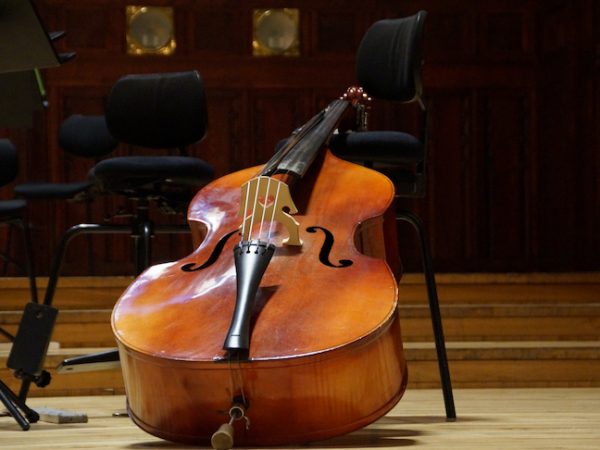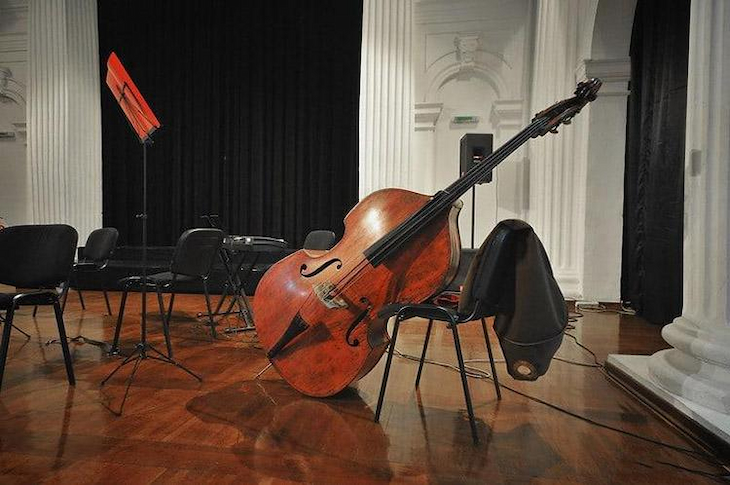16
Aug

First things first, congratulations on deciding to learn to play such a wonderful instrument as the double bass! There’s a world of opportunities you can pursue, as the double bass isn’t only an orchestral instrument but one that’s widely used in jazz and big band music.
Whether you’re new to instrument playing with no previous musical experience, or you’re already playing an instrument and want to start double bass as a second one (many of you are probably bass guitarists converting to double bass), picking your first instrument is a great deal. In addition to finding a good teacher and practice, it’s one of the three main ingredients for success.

The answer to this question is yes – a quality bass double bass is an excellent starting instrument for kids and adults. While you’ll come upon different opinions and recommendations when googling it, you’re the only one who can decide which instrument is suitable for the beginning of your music journey.
If you’re a person who loves the deep, rich tone of the upright bass and are searching for an instrument that can provide a strong foundation in many genres, including jazz, classical and bluegrass, then the bass is an excellent option to start with.
Additionally, the bass double bass often plays an important role in ensembles and playing it can be very physically engaging, which some people find particularly rewarding. And if you change your mind, you can easily transfer the skills you’ve learned to other string instruments. That enthusiasm can outweigh the challenges regarding its size, bulkiness and expense.
Choosing the right bass double bass requires patient consideration of different factors, such as wood types and size. If you don’t have music experience, consult a teacher or knowledgeable retailer. Purchasing a double bass online is also an option; however, be sure to buy from a reputable provider of high-quality string instruments with a team of trustworthy teachers, players and luthiers to help you make the right decision, so you end up with an instrument you’ll love.
The wood type used in a double bass significantly affects its sound quality. Spruce is typically used for the top, while maple is used for the ribs and back. Ebony is common for the fingerboard, though sustainable alternatives are available. Whether you decide to invest in a laminated, hybrid, or fully carved double bass depends on your needs as a player and budget. Each type offers distinct advantages suited to different playing styles and circumstances.
Laminated basses made of plywood are the most affordable but don’t produce as quality sound as other options. They’re preferred for genres like rockabilly, bluegrass, and some jazz. Ideal for school use and rough playing conditions, they’re common in smaller sizes for young beginners. However, they can require frequent, costly repairs.
Hybrid basses have a carved spruce top with laminated maple sides and back, offering better resonance than fully laminated models. They’re affordable and appropriate for both adult beginners and dedicated learners. Hybrid models vary in tone, so finding one that fits your style is critical.
Fully carved basses, made entirely of carved wood, are the preferred choice for professional musicians due to their superior sound quality and ability to mature over time. These are more expensive, starting at a few thousand dollars, and are recommended for serious students ready for a 3/4 size instrument.
Double basses come in various sizes, with the standard “full size” being 3/4, suitable for most adults and growing youth over 160 cm. While 4/4 and 1/2 sizes exist, they offer fewer options for strings and accessories and might lack tonal depth. For children, consult their instructor for the best fit.
Half-size basses are not significantly easier to transport and are best as laminate models due to their shorter lifespan. Small-statured adults might benefit from investing in a carved 1/2 size for improved sound quality. Finding the right double bass size is crucial for comfort and preventing physical strain. Here’s a simple method to determine the best fit.
Stand the bass upright with the player’s left arm fully extended, touching the base of the neck’s heel. The nut should align with the player’s eyebrow. If the nut is too high, the bass is too big.
Repeat the exercise with a half-size bass. If the nut is slightly low, extend the end pin until alignment is perfect. Ensure the player can comfortably touch the top of the bridge with fingertips without the back angle exceeding 45 degrees.
Stand back and evaluate the overall fit. Beginners should typically err on the smaller side, but advanced players might need a larger instrument for better projection.
If in-person sizing isn’t possible, use a height guide for rough size estimation. Consult a teacher before buying or renting. Renting is recommended for beginners due to flexibility in changing sizes.